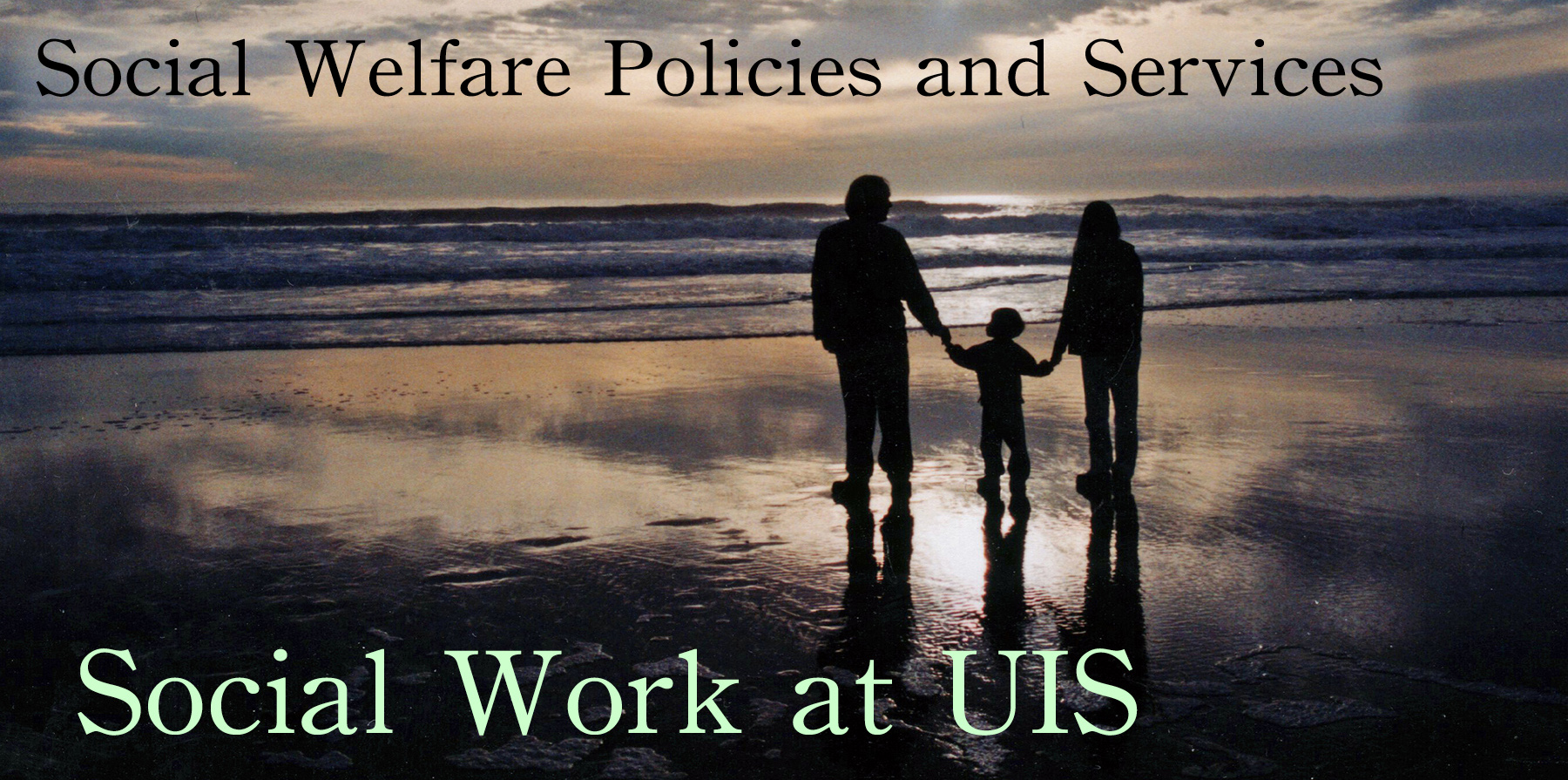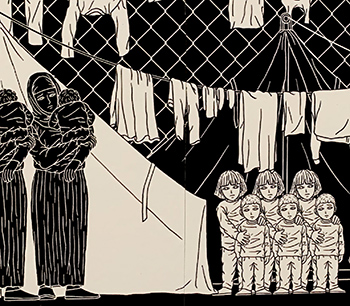Class meeting this week is on Zoom.
Class begins March 31st at 6:00pm and lasts until 9:30pm. Probably we will finish by 7:30 or 8:00pm, allowing you who attend the Zoom session to allocate 2 hours or 90 minutes to the discussion board. Your total time commitment to Zoom and discussion boards combined should be about 3.5 hours.
Class session lasts from March 31 at 6:00 p.m. to April 7 at 5:59pm, but the discussion boards will not be graded until after April 18th.
This page describes what you should do in this eleventh session.
Objectives of this session
- Learn about the Child Welfare System
- What is the overall organization of the child protection and family support policy and services?
- What does Title XX fund?
- Learn about the history of efforts to protect children from abuse.
- Homeless children in 19th century England and the United States
- Child Labor
- Orphanages and Children’s Homes
- The development of foster care (Rev. Charles Loring Brace, New York Children’s Aid Society, 1853)
- Child Protection Origins: Mary Ellen Wilson, (1877 New York act incoroprating societies for the prevention of cruelty to children)
- Creation of the Children’s Bureau in 1912/13, first headed by Julia C. Lathrop.
- 1935 Social Security Act established Aid to Dependent Children (evolved into AFDC, and then TANF)
- 1960, Elizabeth Elmer, “Abused Young Children Seen in Hospitals”
- 1960, C. Henry Kemp. “Battered Child Syndrome”
- 1962, Modern child protective services begin as the duty of the government.
- 1974, Child Abuse Prevention and Treatment Act of 1974 (CAPTA)
- 1975, Individuals with Disabilities Education Act (IDEA)
- 1979, David Finkelhor Sexually Victimized Children
- 1988, Child Abuse Prevention, Adoption, and Fmaily Services Act
- 1989, Convention on the Rights of the Child.
- 1993, Family Preservation and Support Services Program Act of 1993
- 2000, Child Abuse Prevention and Enforcement Act
- 2001, Promoting Safe and Stable Families Act
- 2008, Fostering Connections to Success and Increasing Adoptions Act
- 2010, 4th National Incidence Study published
- 2011, Child and Family Services Improvement and Innovation Act 2011
- 2018, Family First Prevention Services Act.
- Compare the Elder Abuse system of detection with the Child Protective Services.
- Know about prevention of child maltreatment (TANF, Home visitors, etc.)
- Know some of the basic statistics about child maltreatment and foster care.
- Understand some of the issues with juvenile delinquency and how it is handled.
- What are the services to support adoption.
- Understand some of the aspects of School Social Work and how the ADA and IDEA shape social work services in schools.
- Understand some of the research on prevention interventions (usually given in schools) to prevent unwanted pregnancies, STDs, domestic violence, substance abuse, addiction, and sexism/racism.
- Understand some of the research findings on the benefits of extra-curricular activities for children and youth.
- Appreciate the concept of Developmental Assets as a way to assess child well-being in a community.
Time Budget for 11 hours
3h 30m Class meeting on Zoom and time spent on discussion boards.
5m Take a look at children now in need of forever families. If they are not adopted, they face a much higher probability of ending up homeless or unemployed, and they are far more likely to struggle with addictions, depression, and lack of social support. They are at high risk for suicide and criminal convictions. As adults, they are likely to have low incomes, and less likely to attend college or earn a degree than persons who have families. Getting removed from your family (because of the inadequate care or maltreatment you received from your parents) and then neither being reunited nor getting adopted is one of worst “at risk” factors a person can experience, similar to surviving significant head trama, being exposed to horrific violence, or growing up in extreme poverty (and it is more likely that children who have been removed from their parents have experienced all of these other three powerful risk factors).
15m Spend 15 minutes finding at least two studies that have shown benefits of the Parents as Teachers program, which is a typical home visitor program in which a trained professional regularly visits a family with a very young person to assess how the child is developing and give helpful information to the parents. The Parents as Teachers program has a fine webpage with links to evaluation reports and research bibliographies, so spend your time reading some of these material.
1h 30m Read the Appendix A from the 2020 Inspector General Report to see how child welfare policies are actually influencing service with clients.
30m Read over the 2019 Factsheet from the Child Welfare Information Gateway concerning Major Federal Legislation Concerned with Child Protection, Child Welfare, and Adoption.
25m Read A Brief Legislative History of the Child Welfare System.
25m Read A Time to Step Up by Sarah Britt (October 21, 2020).
20m Get a copy of the NIS-4 (National Incidence Study of 2010 [pdf]) and look up the rates of maltreatment (where are now over a decade-old).
15m Read the article by Elizabeth Weiss from October 29, 2019 “I’m a social worker in Chicago schools. I’m excited about getting new colleagues but see much more that needs to change.” from Chalkbeat Chicago.
30m Take some of the online tests you should take for this class (in Canvas).
What will happen in the class meeting at the start of this session?
This is my plan for what we will do in our Zoom meeting on November 4th:
- Check-in
- Social Welfare Policies in the News
- We will talk about how do do a mock hearing.
- We will talk about the process of policy practice.
- We will discuss human rights and social justice and social work core values as they relate to racism.
- We will consider the problem of mass incarceration.
What must you read this week?
Read Appendix A from the 2020 Inspector General’s report on Child Deaths and DCFS.
Read about children who need to be adopted.
Read the list of Major Federal Legislation Concerned with Child Protection, Child Welfare, and Adoption.
Read research on the effectiveness of Parents as Teachers (just read enough to find two examples of findings that support the work of Parents as Teachers)
Read the National Incidence Study #4 and any other reports on child maltreatment (just enough to find the counts and rates of various typcs of child maltreatment)
Read A Brief Legislative History of the Child Welfare System
Read A Time To Step Up
Read “I’m a social worker in Chicago schools. I’m excited about getting new colleagues but see much more that needs to change.”
What must you watch this week?
There is nothing assigned for you to watch this week.
What are the discussion questions this week?
Discussion Question 1:
Discussion Question 11-1: Check in. Tell us how you are doing and what is going on in your life? What are your favorite places to shop? Are there any online shops or websites you prefer? Do you like used clothing and the stuff you can get second-hand? Where do you buy books? What is your favorite grocery store?
Discussion Question 2:
Discussion Question 12-2: Consult the National Incidence Study 4 (released in 2010) and figure out the rates of child abuse, child neglect, and overall maltreatment. Share what you find in that report, and comment here. The NIS-1 collected data up to 1980; the NIS-2 collected data up to 1986; the NIS-3 collected data in 1993; and this NIS-4 collected data in 2005 and 2006. Based on the collections from these four points in time, can we say that child abuse was increasing or decreasing or remaining fairly stable between the late seventies and the mid aughts? Check any other sources you can find to get some facts about child abuse and maltreatment. What are your comments about the facts you learn about child maltreatment?
Discussion Question 3:
Discussion Question 12-3: Policies to address child maltreatment tend to swing from a desire to tolerate errors of leaving children in their homes (family preservation; avoiding removing children from homes where they would be safe) to a desire to tolerate errors of removing children (terminate those parental rights; avoid leaving children in homes where they will be abused or killed). Some errors of each type will occur, as there are hundreds of thousands of households investigated each year, and sometimes a child will be left in a home where they should have been removed; and other times a child will be removed from a home where they should have been allowed to remain. There would be some optimal balance where neither type of error is made in an egregious way, but we do not as a society want to devote the very high amount of resources to reduce error down to nothing.
In your opinion, and after having read the case of “Penny,” this week, what are the dangers of trying to preserve families and leave children with their parents? Compare those dangers to the risks we run if we make it easy to remove children or terminate parental rights. Which sort of error (removing children who should stay; or leaving children who should be removed) is the one that must be considered the worse error? Or, are those two types of errors equally bad?
Discussion Question 4:
Discussion Question 12-4: Human rights are a foundational value of social work, and The Convention on the Rights of the Child (CRC) has not yet been ratified by the U.S. Senate. (see this 2015 article by Sarah Mehta, the Kids Rights Index, this 2019 article by Liane Schalatek, or this 2019 article by Jo Becker), or this 2018 article by Lida Minasyan). Do social workers have a duty to do something about this? Why has the United States Senate not signed the Convention on the Rights of the Child (how does the Senate ratify treaties or conventions)? From September 24, 2009 until February 4, 2010 the Democrats had 58 seats in the Senate plus two independent Senators who voted with the Democrats, but even during those four months, the Senate did not pass the CRC (those were the only four months when the Democrats had control of Congress during the Obama Administration).
Should social workers be trying to get the Senate to ratify the CRC? What should we be doing? If the United States ratified the CRC, according to the U.S. Constitution, the CRC would become something like the highest law of the land, so what would that mean?
Discussion Question 5:
Discussion Question 12-5: What did you learn from the story about Penny Watson? What are some of your reactions to the story? Would you have done a better job if you had been one of the child protection workers who came into contact with Sarah Geiger and her children?
Discussion Question 6:
Discussion Question 12-6: Some political scientists suggest that child welfare is generally a low priority in democratic societies partly because children do not vote. It is easy to talk about how important children are, but if you really believe children are important, what polices would someone fund? Then, consider whether those things are adequately funded, or whether they are poorly funded (or nonexistent). Maybe people do care about children and like them, but they care about others things even more (having a very strong military, letting people pay lower taxes so that the economy will flourish and rich people will make political campaign contributions, making sure elderly and middle-aged people get good jobs and healthcare, etc.). Some children’s advocates point out that children are routinely ridiculed and ignored by adults. Adults often show disrespect to children, and there are still many states adults may physically strike to discipline them in school (Ingraham v. Wright, 1977) (there were 19 states allowing corporal punsihment in schools in 2016).
In Indiana, an adult struck your instructor’s hands with a belt when he was 8-years-old after he touched (literally only touched, or maybe just came near) some gymnastics equipment he had been told not to approach or touch. On many other occasions he and his classmates were warned that they could be struck by a wooden paddle if they misbehaved.
Children are, of course, immature, and they do not understand the world or the consequences of their actions. Some children are especially cruel and violent toward other persons or animals, and some are very destructive of property. Children are also not very competent in many endeavors. And yet, at some age children ought to be taken more seriously. In fact, the CRC says that children have a right to be heard (“States Parties shall assure to the child who is capable of forming his or her own views the right to express those views freely in all matters affecting the child, the views of the child being given due weight in accordance with the age and maturity of the child.”)
What is your view of the proposition that children are an oppresessed minority? Do children suffer unjust discrimination and marginalization? Are children oppressed by adults? Is this a useful framework for understanding how our society views and treats children? Or, is this not really the way to think about the mistreatment of children, and some other approach to conceptualizing the fact that children are not taken very seriously?
Discussion Question 7:
Discussion Question 12-7: What will it take, in your opinion, for us to pretty much end child maltreatment, so that it becomes an exceptionally rare experience? How do we get to that sort of society?
1) About how many people in America are homeless on any given night, and about how many experience homelessness in any given year
2) Approximately what is the total cost incurred by the public by incarcerating by the public by incarcerating criminal suspects and convicted criminals, including costs of local jails, state penitentiaries, federal prisons, and so forth?
3) What percentage of the American population is disabled?
4) What percentage of the population identifies that they are Asian or Pacific Islander, or are mixed-race with some Asian or Pacific Islander racial identity?
5) At the most recent survey of homeless persons (conducted in January), how many persons were homeless in Springfield, Illinois?
6) What are the upper income limits for families with two, one, or no qualifying children to receive the EITC, and what are the potential ranges of EITC benefits for such families? That is, in order to qualify for EITC, a family must earn less than a certain number, so what is that number for these families, and what is the minimum possible EITC (it is usually less than $15), and what is the maximum benefit (maximum benefits can vary widely depending on family size, from several hundred to more than a few thousand, look up the lowest and highest possible benefit for these families).
7) What is the annual tax expenditure on the home mortgage interest deduction?
8) In a two person household in Springfield, Illinois with an adult and a child aged 8, where the child was disabled from birth (with a developmental disability), and the household income was $20,000, what, if anything, would be the Supplemental Security Income the household might expect to receive?
9) Approximately how many persons are incarcerated at any given moment, including in local jails, state penitentiaries, federal prisons, and so forth?
10) What percentage of the population is aged 65 or older?
Discussion Question 8:
Discussion Question 12-8: Open thread for any questions you might have or any points you want to make.
Activities
Here is what I expect you to do this week
- We have class, and then you should have some time to post in the discussion board.
- Take a look at children now in need of forever families. That is how you should start the readings this week. They are in need of forever homes, which means their parents are dead or imprisoned or else they have had their parental rights terminated, and there was no successful kinship care placement, and foster parents who have had them do not want to adopt them.
- Read some history. You have an historical overview of the child welfare system you need to read: A Brief Legislative History of the Child Welfare System. Do not fear this reading (only 6 pages). To learn more, you can look at some of the optional extra reading I list below.
- You have two “activity” readings where you must look at a source to find specific information. First, look at the the NIS-4 (National Incidence Study of 2010 [pdf]). That was based somewhat on surveys, and tried to estimate one-year incidence. What about lifetime incidence? It is much, much higher. and you can check for confirmed (substantiated or indicated) incidents of child maltreatment that have been detected by the child welfare system elsewhere. Some of my colleagues estimate that over a third of children experience a child maltreatment investigation by the time they reach age 18. The Administration for Children and Families puts out a Child Maltreatment Report every now and then, with more up-to-date statistics from child protective services across the 50 states.
After you have collected some figures and estimates for how many children experience various sorts of maltreatment (by the way—1,700 to 1,800 are killed by their parents/caregivers each year), move on to your next assignment/exercise/reading:
Look at the
research page for the Parents as Teachers program, which is a typical home visitor program in which a trained professional regularly visits a family with a very young person to assess how the child is developing and give helpful information to the parents. The Parents as Teachers program has a fine webpage with links to evaluation reports and research bibliographies, so spend your time reading some of these materials, and find at least two examples of evidence or studies that show there is benefit to these sorts of home-visitor programs.
- Back to policy with a significant investment in loooking over the 2019 Factsheet from the Child Welfare Information Gateway concerning Major Federal Legislation Concerned with Child Protection, Child Welfare, and Adoption. It is 28 pages long. You do not need to read all of it; just spend about 30 minutes looking over the major pieces of legislation.
- Now, you are saturated with policy, and it is time for you to read the long assignment for this week, which is Appendix A from the 2020 Inspector General Report. You will probably find this very difficult to read. It is going to make you feel very, very low when you read it. After reading the Inspector General’s review of the case of “Penny Watson” (remember that all the children and clients are described using fake names, but all the social workers and adults who were paid to help protect the children are named), you may need to talk to someone about it.
- For a bit of hope read A Time to Step Up by Sarah Britt (October 21, 2020).
- Finally (for your reading), check out this brief article by Elizabeth Weiss from October 29, 2019 “I’m a social worker in Chicago schools. I’m excited about getting new colleagues but see much more that needs to change.” from Chalkbeat Chicago.
- We will have probably gone over mock hearings during our 11th class meeting, so you should be able to take a break from preparing for the final mock hearing until the 12th session. So, wait until next week to work on the mock hearing. Instead, use about 3 or 4 hours to work on your third policy paper.
- You should probably start taking tests and preparing for the final exam.
Commentary:
Things to remember: (jargon)
“Title IV-B” Child Welfare Services and Promoting Safe and Stable Families is the part of the Social Security Act that authorizes the federal government to give money to states to improve services to families and children who have come to the attention of (or come into the custody of) the state child welfare agency.
“Title IV-E” grants and programs are: foster care program; adoption assistance program; and the Chafee Foster Care Program for Successful Transition to Adulthood. In other words, IV-E money helps kids who are not in the custody of their parents.
A recent (2018) law is the SUPPORT for Patients and Communities Act. One thing this law did was establish an interagency task force to make recommendations regarding best practices for trauma (identify, prevent, and mitigate effects of). If you are interested in what is done about trauma, the Government Accounting Office looked into this in 2018-19, and wrote a report [pdf] about what is being done. There is also a Senate staff memo about a hearing held in July of 2019 about trauma care [pdf]. But, I do not know whether the task force has actually been created or is doing anything.
The same law (SUPPORT for Patients and Communities Act) also, “Amended title XIX (Medicaid) to require States to ensure that former foster youth are able to keep their Medicaid coverage across State lines until age 26”
The Family First Prevention Services Act of 2018:
1) defined “foster family home” in such a way that families are limited to six children (with exceptions).
2) Created $8 million to be given to states to help them recruit and retain high quality foster parents.
3) forced states and tribes to establish procedures to examine that kids in foster care are not getting inappropriate diagnoses, and that spurious diagnoses are not putting kids who could be fine in a good foster care family into residential treatment facilities.
4) funded the development of some sort of electronic database of kids in need of foster care and foster care homes so that children could be more easily placed across state lines.
5) required residential treatment programs to have a trauma-informed treatment model and to allow family members to participate in treatment for the children (to the appropriate extent).
The Comprehensive Addiction and Revovery Act of 2016 modified the Child Abuse Prevention and Treatment Act (CAPTA) to
1)
force states to keep and report statistics about infants who have fetal alcohol spectrum disorder and those who have substance use or withdrawl symptoms from prenatal drug exposure.
2) added to the job of the Secretary of Health and Human Services the role of disseminating information about best practices related to plans of safe care for infants exposed to alcohol and drugs while in their mother’s womb.
3) added to language that had already mandated states to provide plans of safe care for infants new specifications that included “addressing the health and substance use disorder treatment needs of the infant and affected family/caregiver.”
SAMHSA created a very good series of slides I recommend to help you understand prenatal substance exposure and child welfare implications [pdf]. You can also peruse training information about North Carolin’s Safe Care plan summary in pdf.
You can look over the list of legislation and find your own highlights and bring them to the class as you explore the legislation that covers child welfare.
What you should know after doing the reading:
In the 1700s, what was done with orphans and other children whose parents could not care for them?
What are the two key ideological debates about child welfare?
1. The conflict between the state and local governments’ rights and responsibilities related to child welfare pitted against the federal role in ensuring adequate protection for all children?
2. The conflict between the rights of children and the rights of parents; especially in the realm of making decisions about removing children from parents (reducing the error of violating children’s rights) or leaving children with parents (reducing the error of violating parental rights).
What were conditions in orphanages before the mid-1800s, and how frequently did children in orphanages die?
What sort of process was typical for children to be placed in indentured work or placed in foster families? Were families screened well?
What was the role of the 1935 Social Security Act (especially Subpart 1 of Title IV-B) in child welfare?
Articles 19 and 20 from the Convention on the Rights of the Child are the most relevant for this session:
Article 19
1. States Parties shall take all appropriate legislative, administrative, social and educational measures to protect the child from all forms of physical or mental violence, injury or abuse, neglect or negligent treatment, maltreatment or exploitation, including sexual abuse, while in the care of parent(s), legal guardian(s) or any other person who has the care of the child.
2. Such protective measures should, as appropriate, include effective procedures for the establishment of social programs to provide necessary support for the child and for those who have the care of the child, as well as for other forms of prevention and for identification, reporting, referral, investigation, treatment and follow-up of instances of child maltreatment described heretofore, and, as appropriate, for judicial involvement.
Article 20
1. A child temporarily or permanently deprived of his or her family environment, or in whose own best interests cannot be allowed to remain in that environment, shall be entitled to special protection and assistance provided by the State.
2. States Parties shall in accordance with their national laws ensure alternative care for such a child.
3. Such care could include, inter alia, foster placement, kafalah of Islamic law, adoption or if necessary placement in suitable institutions for the care of children. When considering solutions, due regard shall be paid to the desirability of continuity in a child's upbringing and to the child's ethnic, religious, cultural and linguistic background.
(by the way, kafalah is a form of foster care that is similar to adoption, but is not technically adoption, because in Islamic jurisprudence most authorities hold that a child can never be alienated from their biological parents, although kafalah puts upon the "adoptive" household almost all the obligations and rights of adoptive parents, except it does not give automatic inheritance rights to the "adopted" child, although in practice kafalah obligates the "adoptive" parents to treat the "adopted" child without prejudice, treating the child in the same way the family's biological children are treated).



















































































